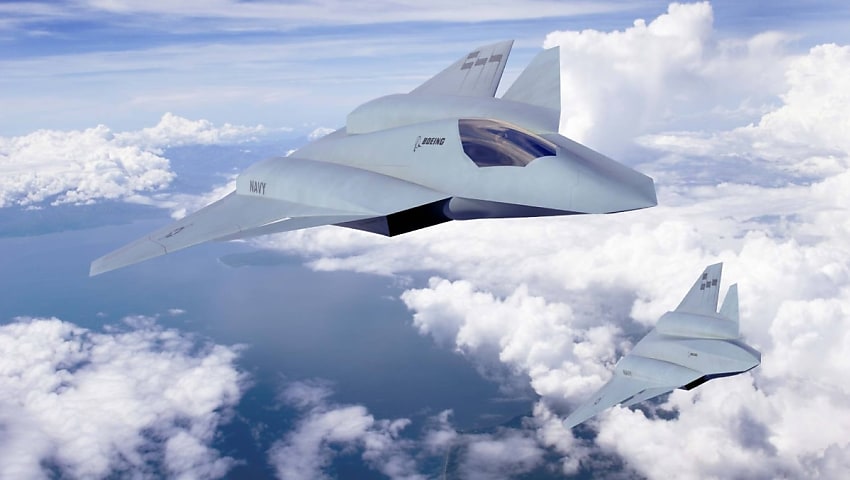The US Navy has confirmed that Boeing, Lockheed Martin, and Northrop Grumman are actively competing to develop and build the service’s next-generation, carrier-based fighter jet as part of the transition towards a sixth-generation capability.
To continue reading the rest of this article, please log in.
Create free account to get unlimited news articles and more!
In a major step forward for the highly secretive F/A-XX program to replace the US Navy’s fleet of Boeing-built F/A-18E/F-series Super Hornet aircraft, the US Navy has confirmed that Boeing, Lockheed Martin, and Northrop Grumman are currently actively competing to deliver the potentially multi-billion contract.
Based on reporting from Aviation Week and Breaking Defense, the US Navy also confirmed that General Electric Aerospace and Pratt & Whitney are also competing to deliver the engine for proposed, next-generation fighter aircraft fleet that will differ from the US Air Force’s Raptor-replacing Next Generation Air Dominance (NGAD) program.
Importantly, both engine competitors are also competing for the NGAD program, while Northrop Grumman confirmed in June that it was not competing for the Air Force’s program.
A US Navy spokesperson told Breaking Defense, “F/A-XX has recently completed the Concept Refinement Phase and has entered design maturation. Navy confirms that Boeing, Lockheed Martin, Northrop Grumman, GE Aerospace, and Pratt & Whitney are industry participants in the F/A-XX Program.”
This announcement comes following a long lull in the development of the program, after the US Senate Armed Services Committee laid down the law in 2021, as part of the budgetary approval for the FY2021 National Defense Authorization Act (NDAA) telling the branch to come up with a “concrete plan for fielding next-generation fighter aircraft”.
As part of this, the Senate Armed Services Committee’s Fiscal Year 2021: National Defense Authorization Act summary establishes an expectation from the Navy, stating that it “requires the Navy to create a fighter aircraft force structure acquisition strategy and report on aircraft carrier air wing composition and carrier-based strike fighter squadrons to better prepare for potential conflicts envisioned by the National Defense Strategy”.
Unpacking the future of the program and the capability expected to be delivered, the US Navy spokesperson said, “[The US Navy] has identified operational reach, capacity, long-range kill chains, autonomy, and next-generation survivability as key enablers in the Air Wing of the Future and supporting Family of System.”
Meanwhile, in a statement to Aerospace Daily, Tom Jones, president of Northrop’s Aeronautics Systems said, “Our focus and investment in digital engineering, advanced manufacturing and legacy in designing and fielding aircraft with advanced mission systems allow us to rapidly design, execute, and sustain current and future systems.”
This approach draws on the company’s experience developing the B-21 Raider, alongside work conducted on the F-35 fighter program and supporting the F/A-18 program and delivering the E-2D Hawkeye capability.
Steve Nordlund, Boeing’s vice-president of air dominance, provided a statement on behalf of Boeing, stating, “Boeing fighters are the backbone of today’s carrier air wing, and we’re using what we’ve learned to inform the multibillion-dollar strategic investment we’re making in advanced open mission systems and brand-new, all-digital factories of the future ... We are fully committed to helping the US Navy achieve its future vision.”

 Login
Login







